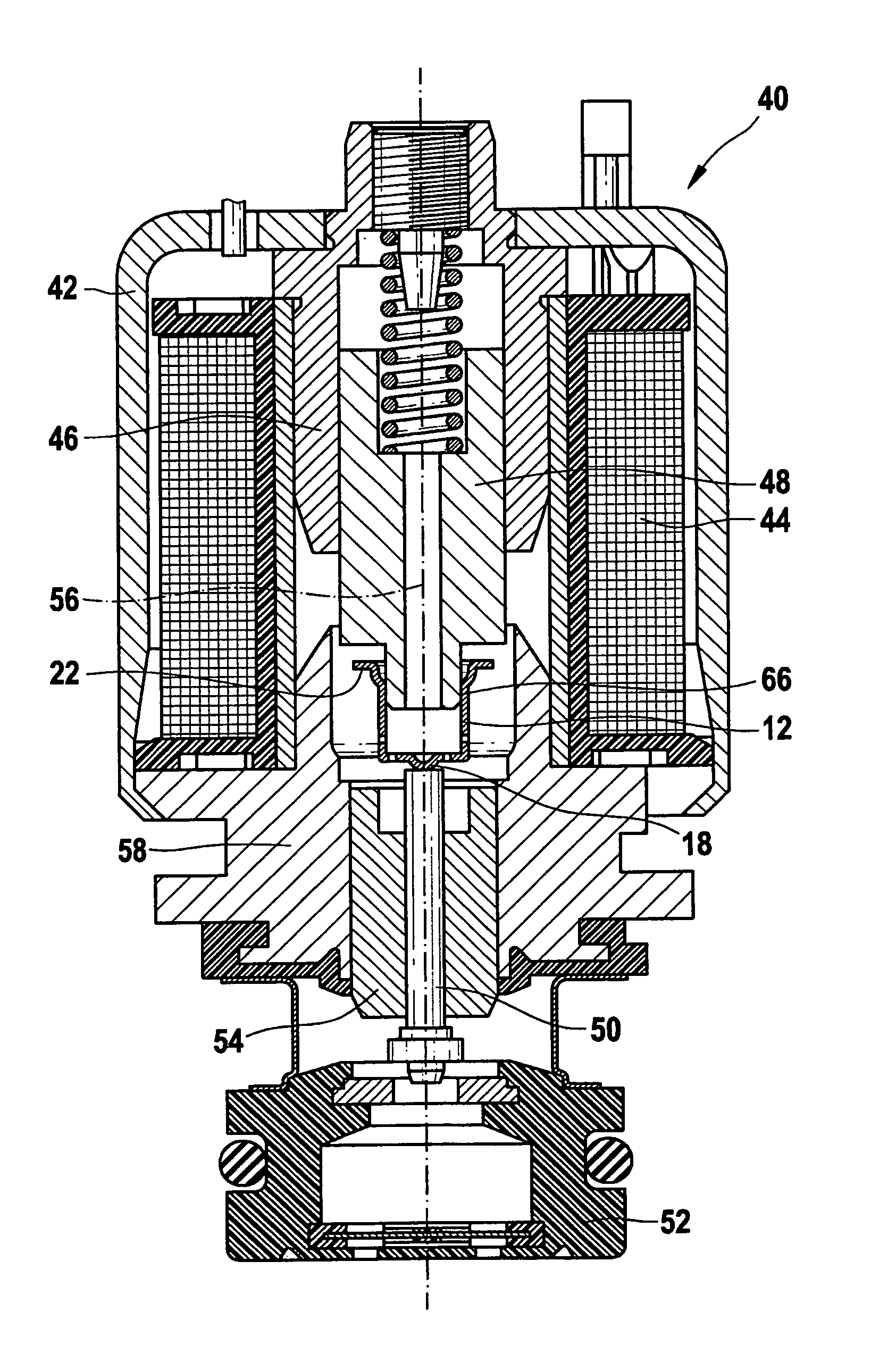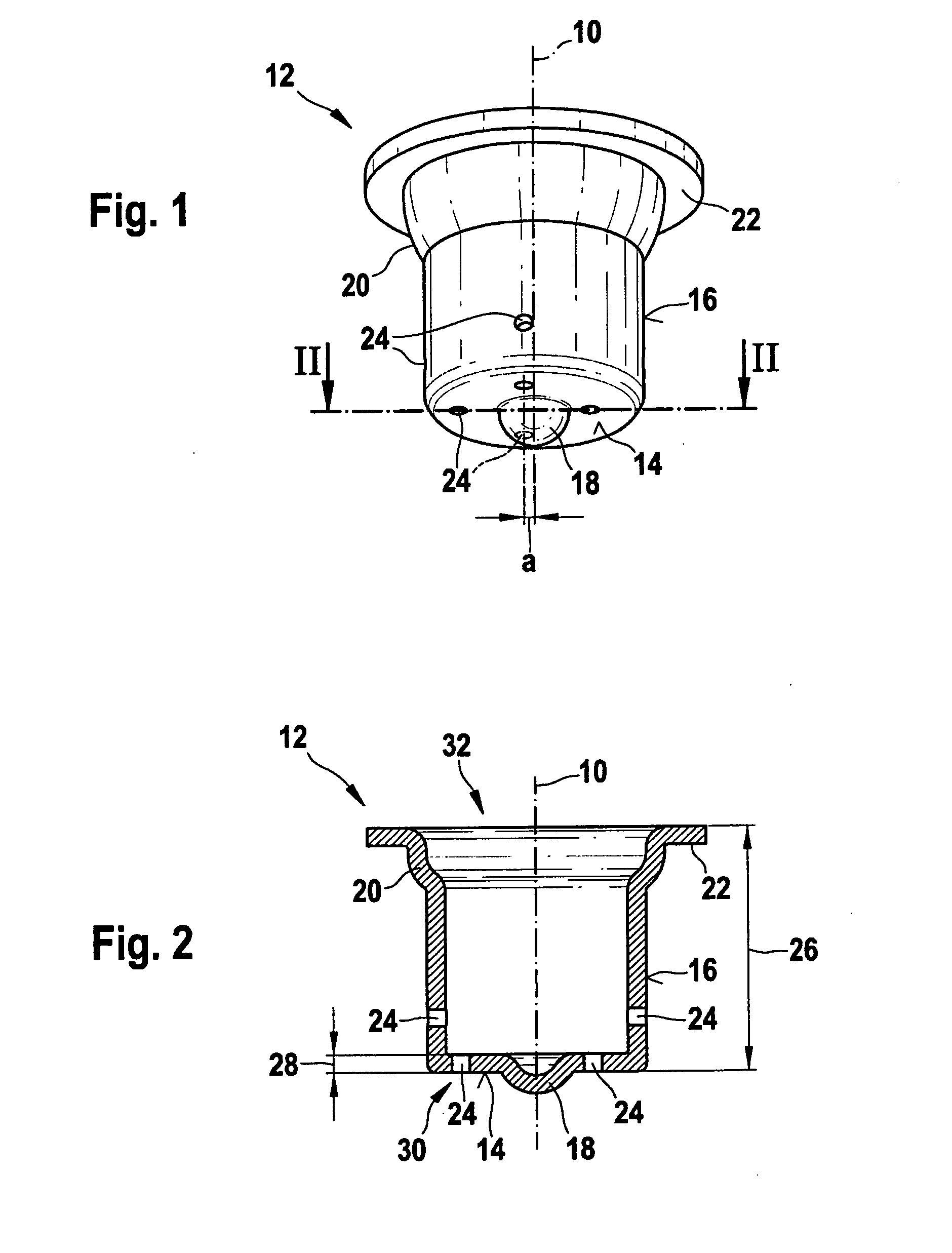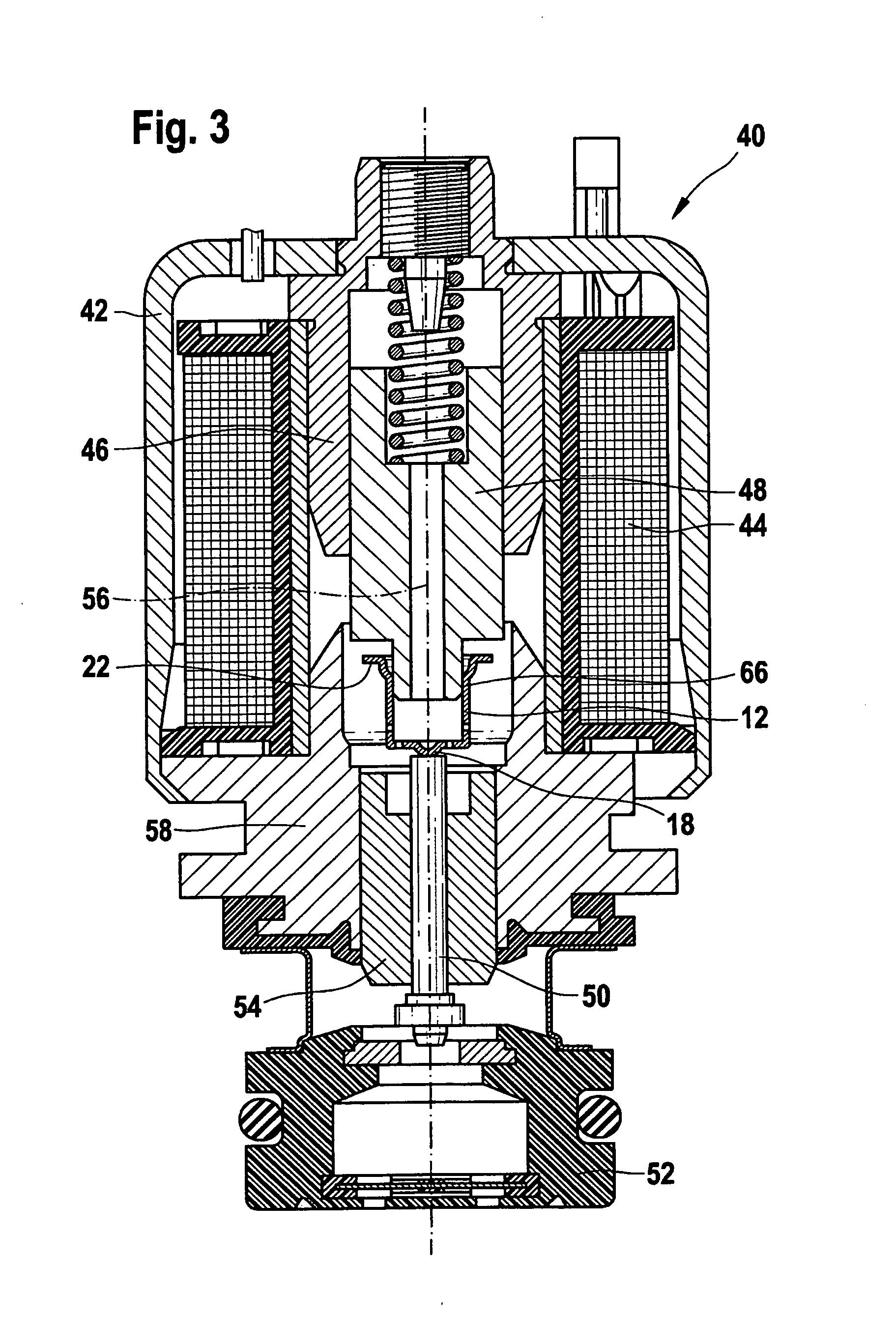Device for damping the armature stroke in solenoid valves
a solenoid valve and armature stroke technology, which is applied in the direction of valve housings, valve operating means/releasing devices, mechanical devices, etc., can solve the disadvantages of the aperture function of the hydraulic cross section and the relatively high manufacturing cost, and achieve the effect of small aperture diameter, good aperture function and very cost-effective manufacturing
- Summary
- Abstract
- Description
- Claims
- Application Information
AI Technical Summary
Benefits of technology
Problems solved by technology
Method used
Image
Examples
Embodiment Construction
[0020]The damping element according to the present invention is shown in a perspective view in FIG. 1.
[0021]Damping element 12 has a generally cup-shaped geometry (see FIG. 2) and is built symmetrically with respect to a symmetry axis 10. Damping element 12 includes a base surface 14 and a lateral surface 16. Multiple aperture cross sections 24, which may be produced as bore holes, are provided in base surface 14 of damping element 12. Alternatively, aperture cross sections 24 for an overflowing fluid, such as oil for example, generating the damping may also be provided in lateral surface 16 or in base surface 14 and lateral surface 16 of damping element 12. Aperture cross sections 24 may have a circular, oval, slot-shaped, rectangular, square, or even kidney-shaped design or be designed in any other geometry. Furthermore, a coupler point 18, which is designed as a head-shaped elevation in the exemplary embodiment of damping element 12 shown in FIG. 1, is situated in base surface 14...
PUM
 Login to View More
Login to View More Abstract
Description
Claims
Application Information
 Login to View More
Login to View More - R&D
- Intellectual Property
- Life Sciences
- Materials
- Tech Scout
- Unparalleled Data Quality
- Higher Quality Content
- 60% Fewer Hallucinations
Browse by: Latest US Patents, China's latest patents, Technical Efficacy Thesaurus, Application Domain, Technology Topic, Popular Technical Reports.
© 2025 PatSnap. All rights reserved.Legal|Privacy policy|Modern Slavery Act Transparency Statement|Sitemap|About US| Contact US: help@patsnap.com



